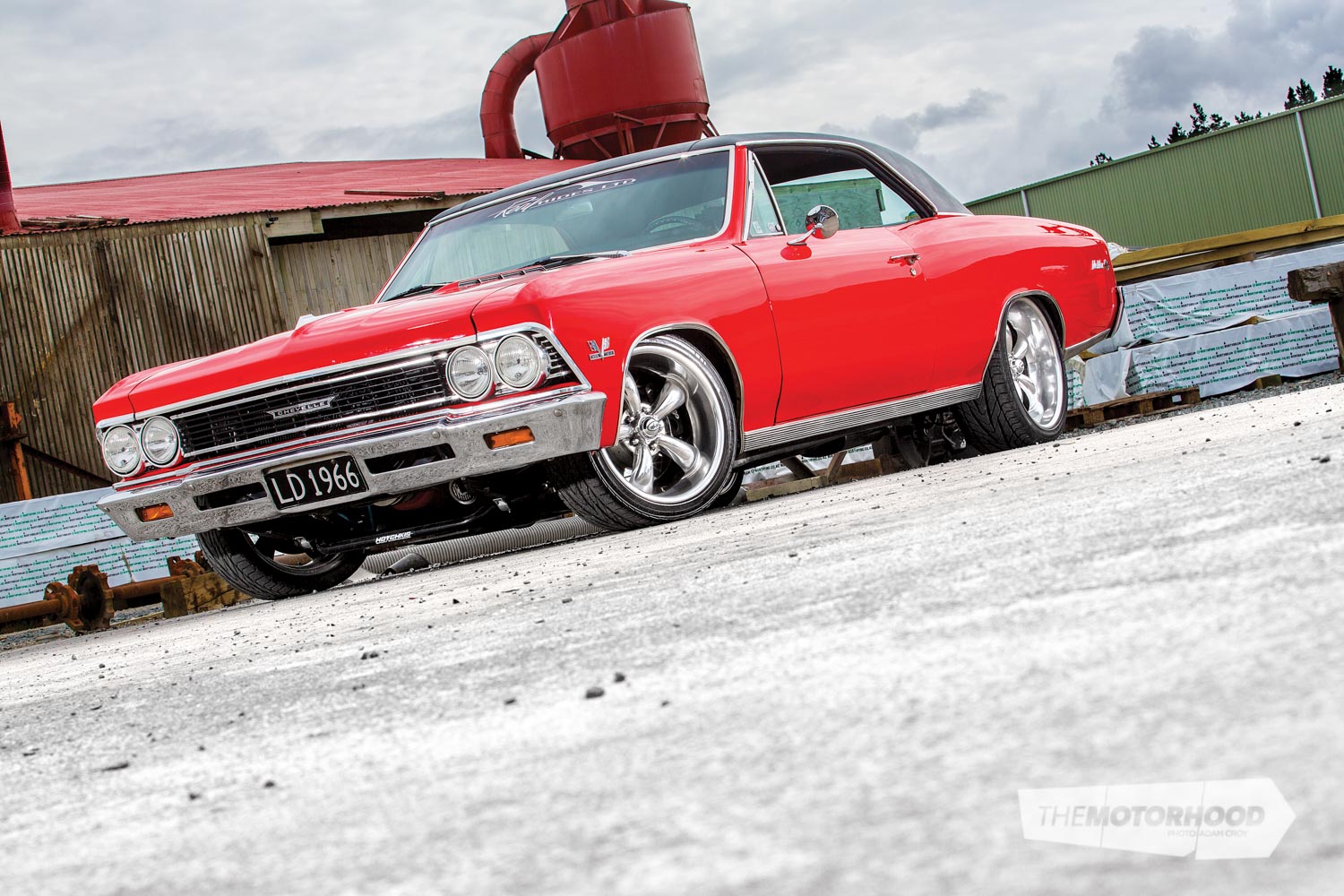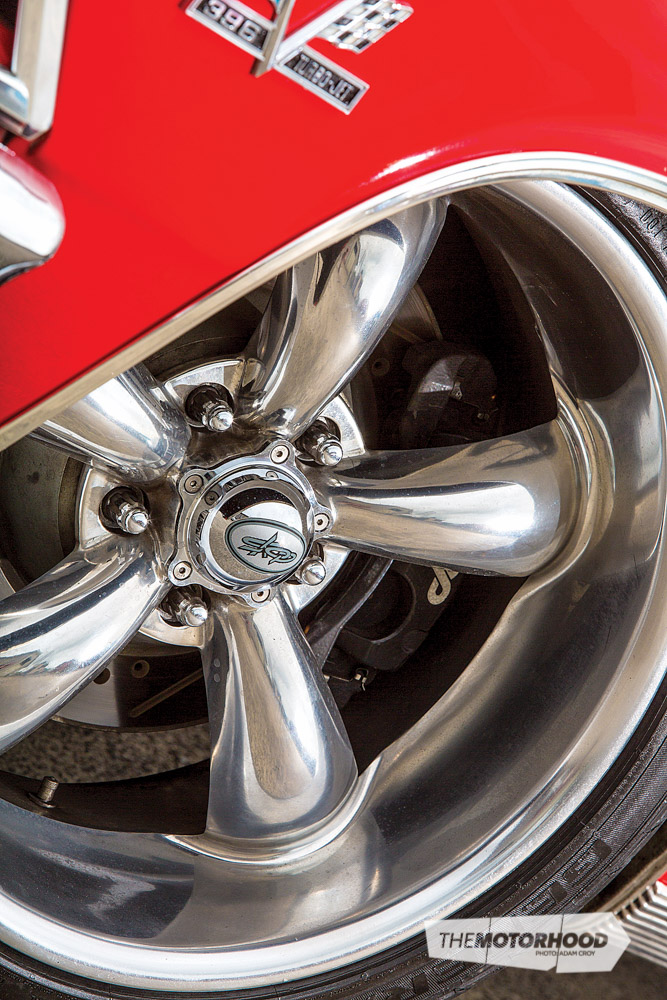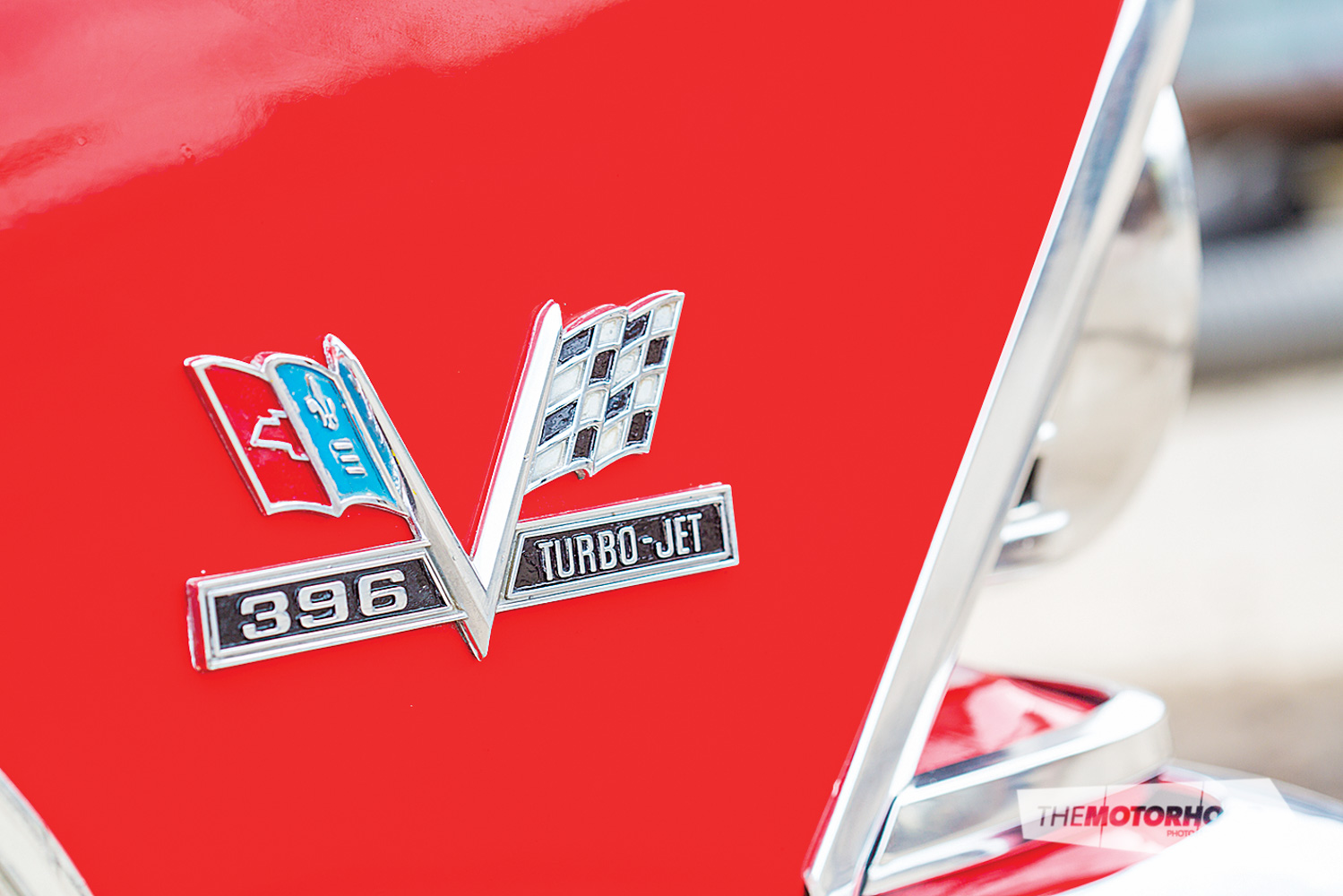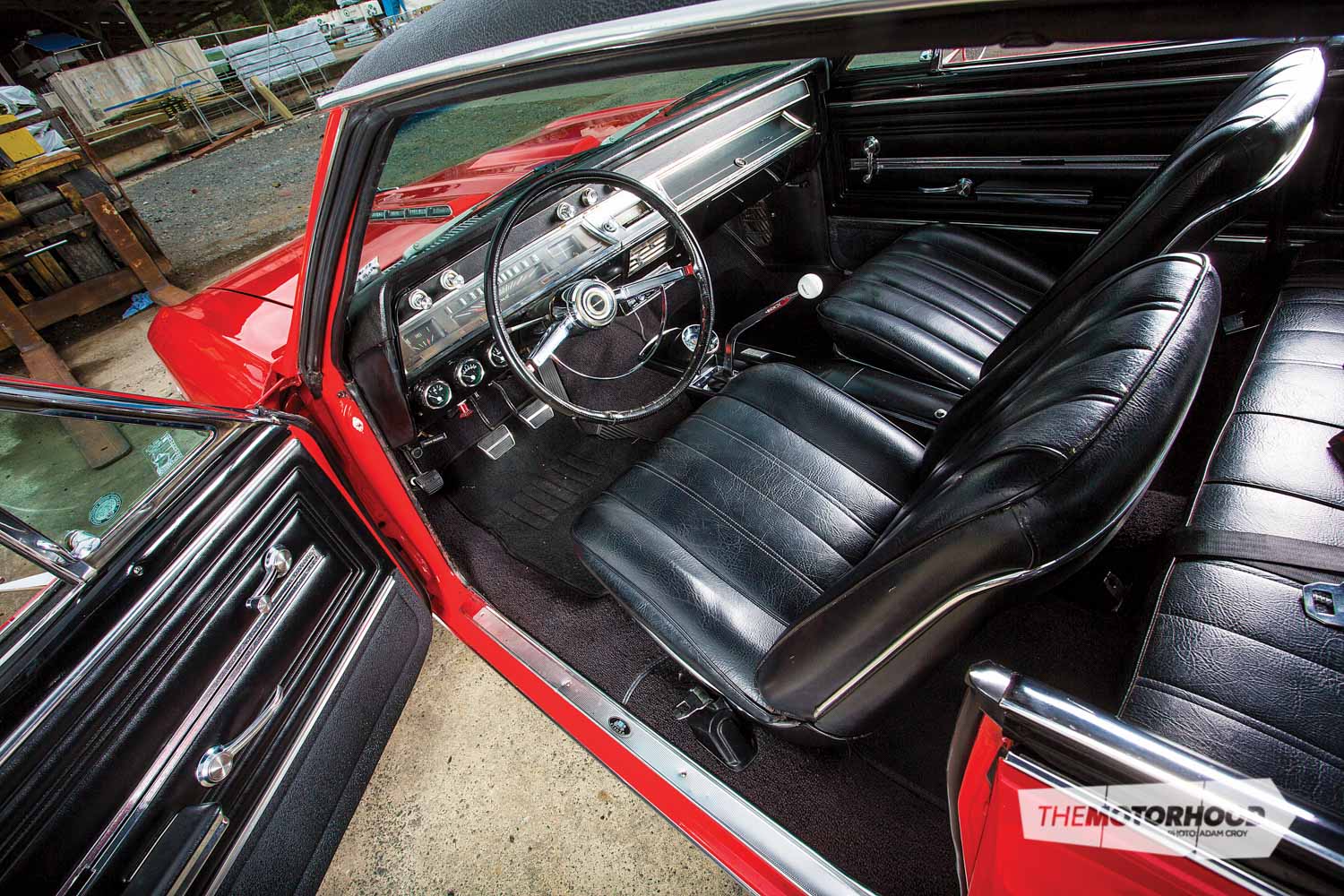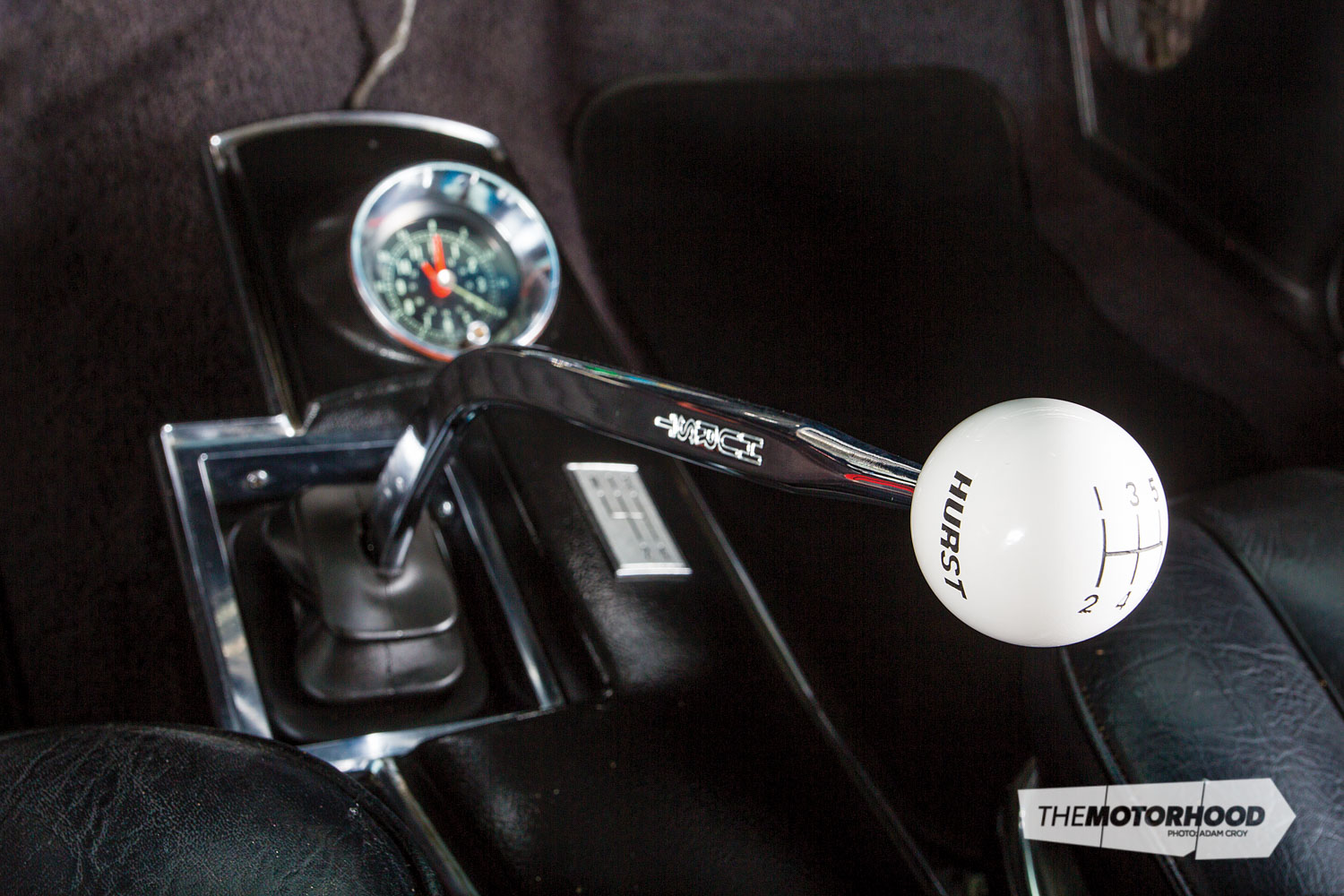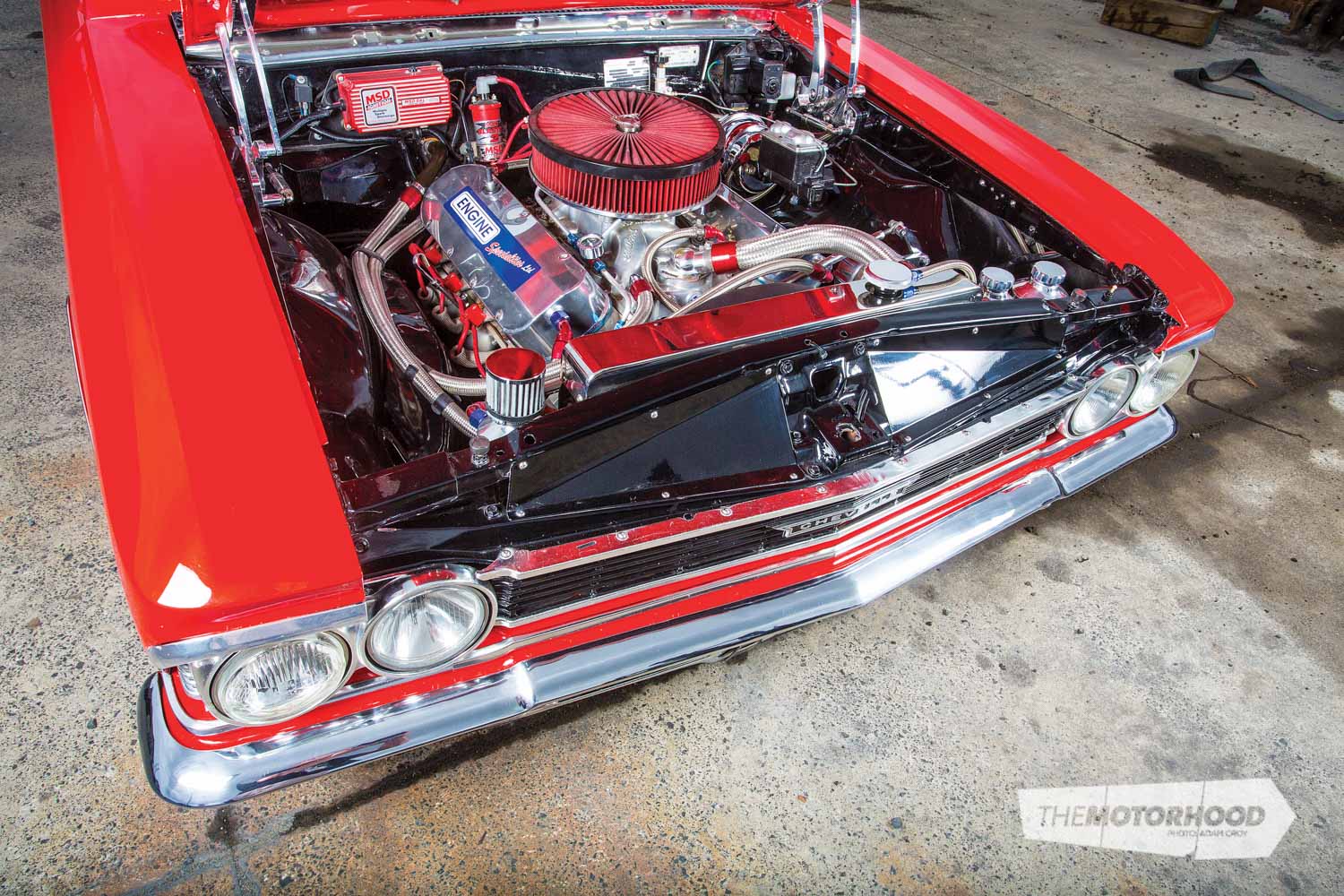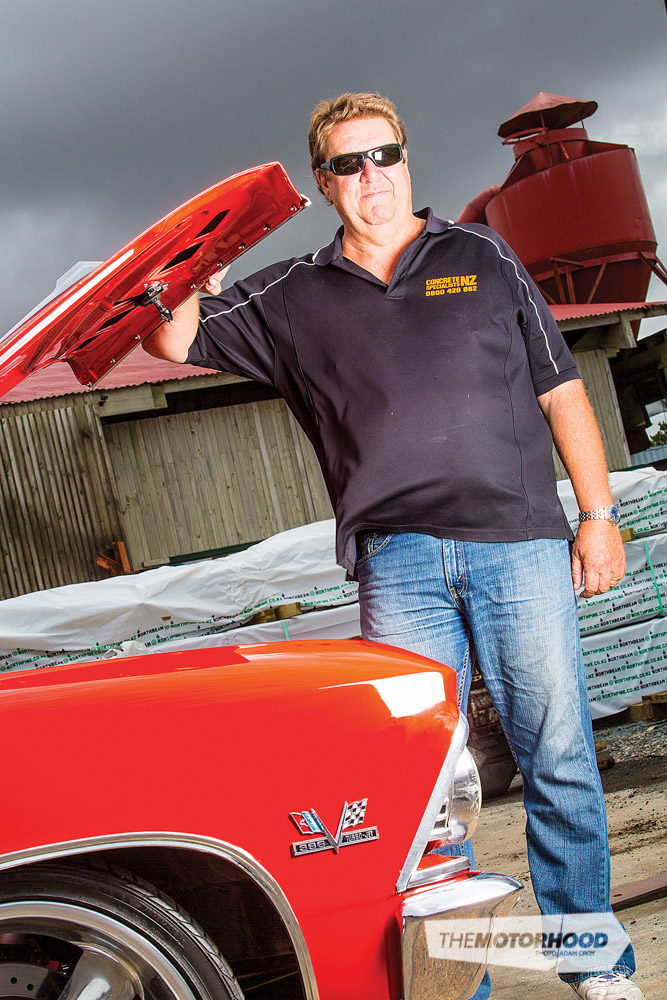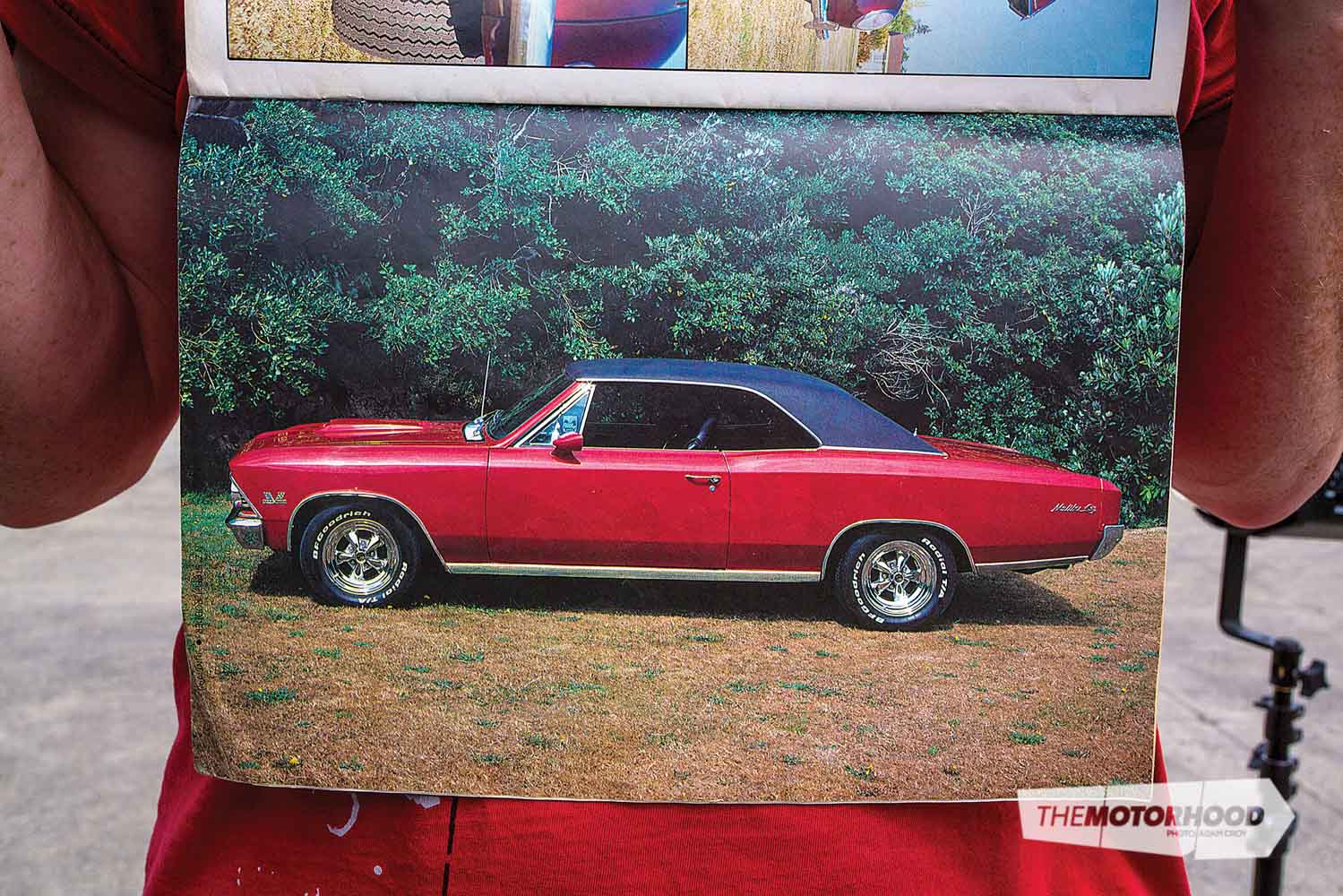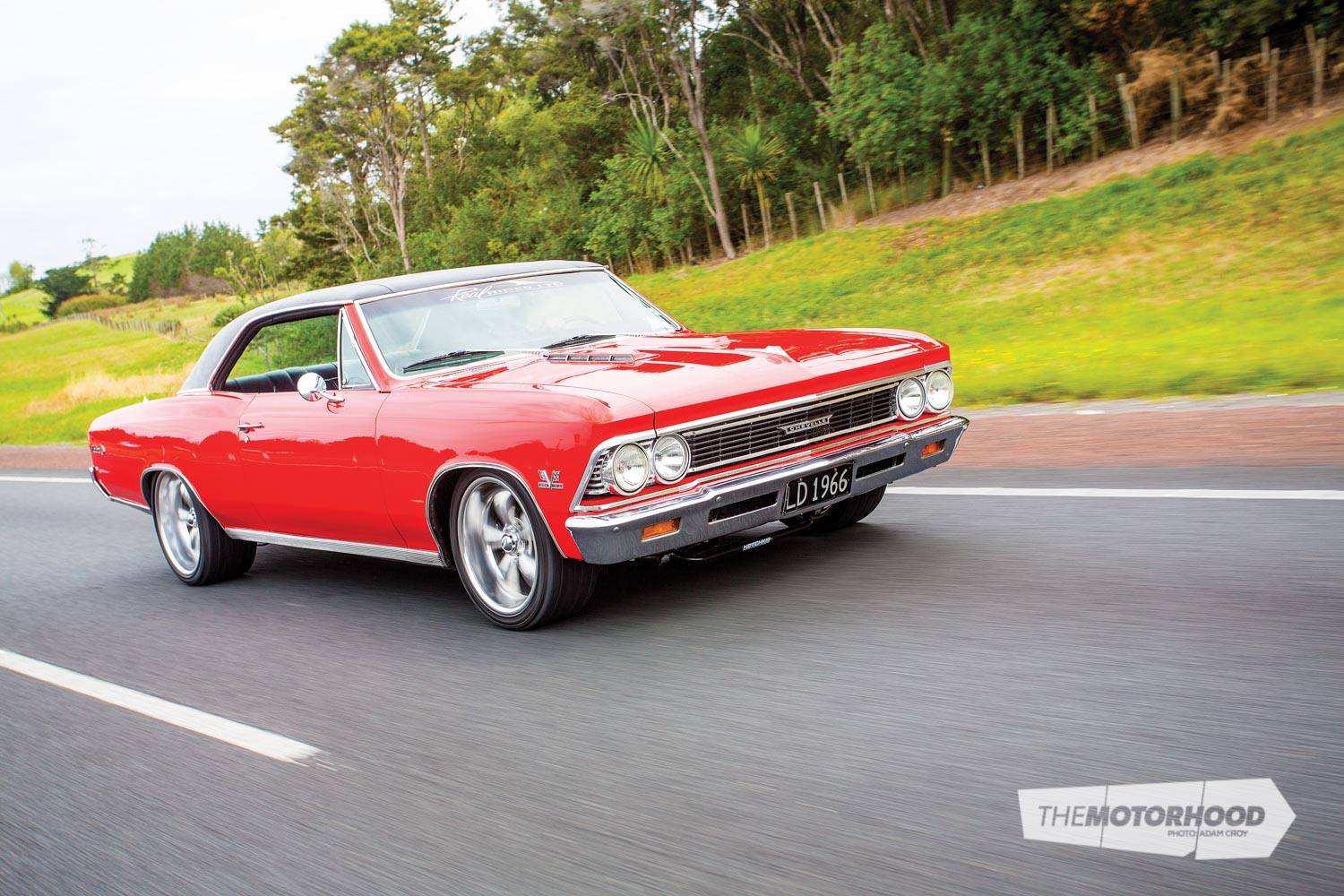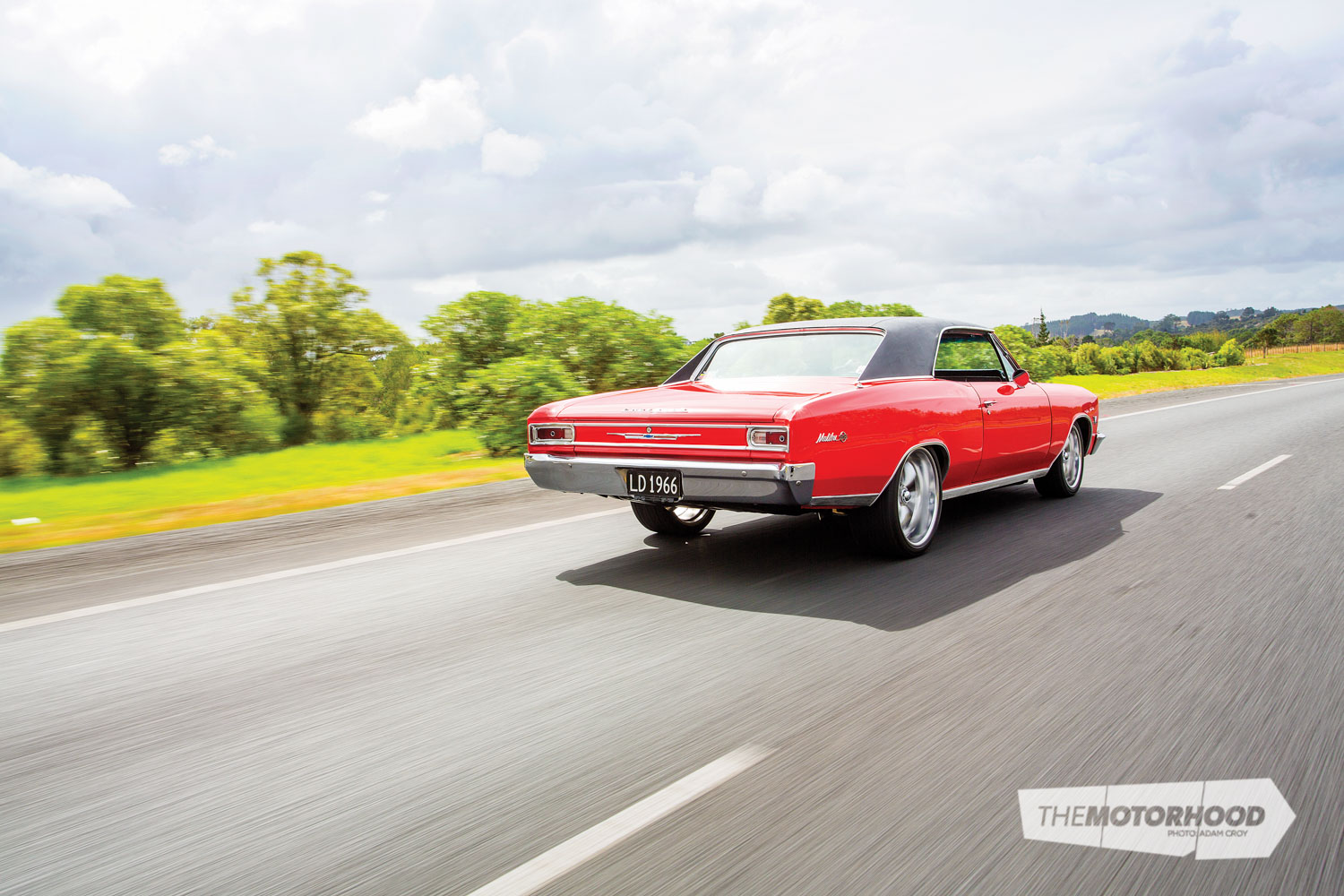data-animation-override>
“This big block manual Chevelle has been terrorizing the streets of New Zealand since 1971, and it doesn’t look to be slowing down anytime soon”

We bet whoever imported this 1966 Chevelle Malibu into New Zealand from Alberta, Canada, had no idea that, 44 years later, it’d be making its third feature-car appearance in a New Zealand magazine. Then again, when Wellingtonian Lester Davis got his hands on it in 1981, he probably wouldn’t have imagined that would ever happen, either, and it was when the car was in his ownership that the first two features appeared.
While it was in Lester’s hands, the car underwent a major overhaul. The 454ci big block, which had been fitted at some stage, was pulled out and a 396 dropped in — but not before it had been rebuilt by Robin Silk to give it a bit more punch. In this state, the car went on to win the title of Grand National Champion at the 1984 Street Rod Nationals — Lester is quick to point out that that was in the days when the award was more about participation than just the standard of the car.

Fast forward a few decades, and Aucklander John Gamble spotted the car for sale. He instantly fell in love with it, even if its restoration was by now somewhat old. At the time, though, John’s garage was full and, with a house under construction, he wasn’t in a position to make a purchase, as much as he’d have liked to. As it happened, a friend of his was, and asked if John knew of anything decent up for grabs. Although John didn’t want to let anyone know about the Chevelle, he caved, gave his mate the details, and the mate soon made the purchase.
As we all know, life changes, and when said friend wanted to sell the car on, John was the first in the queue to buy it. By this stage, the rebuilt 396 had gone and a 427 had been dropped in the hole. John couldn’t have been happier with his purchase. Over the next few years, he kept adding his own touches to the car, and that slow and steady progress has continued till this day. John describes the Chevelle as his own version of a pro-touring car; with all the work he’s put into the suspension, brakes, and engine, we’d agree with his description.
Long gone is the stock front coil spring set-up that Lester restored all those years ago. In its place, you’ll find a set of QA1 adjustable coilovers wrapped with King springs. This is just the beginning, as they’re now secured to a set of Hotchkis tubular lower arms that work in conjunction with SPC adjustable top arms. When it came time to source a sway bar, the Hotchkis catalogue was once again turned to for one of its beefiest items. The front set-up is essentially replicated down the back, with UMI adjustable arms now working with QA1 adjustable shocks and a Hotchkis sway bar to help hold the diff in place.

Making the most of the adjustable components he’s installed, John has got the car sitting down nice and low over a set of 18×8-inch and 20×10-inch Coys wheels — wheels that he was told were too wide and would never fit under the stock bodywork. Given the car’s extensive history, John was never going to cut or drill anything on it. In fact, he’s still got all the original parts that came with the car, should he ever wish to return it to its restored stock state. So, while it may sound like plenty of work went into sourcing the correct offset wheels to fit, that couldn’t be any further from the truth. The wheels were sitting at good friend Kayton Coughey’s Real Rides workshop, and the boys decided to chuck them on for a laugh one night; they’ve stayed on ever since.
The change to the big wheels has allowed the CPP disc brake kit that was previously fitted to be far more visible, and, while the brakes are not astronomical in size, they’re still plenty big and haul up the car well. Under the hood you’ll find a polished booster set-up that controls the system, as well as many other polished dress-up items, such as custom-made catch cans.
With the paintwork ageing, John knew that sooner or later it’d need a tidy-up. A few years ago, that’s exactly what it got. Not wanting to lose the car’s identity or history, John had to keep it red, but exactly which red was a major talking point. Again, the Real Rides team was brought on board to work its magic. While having a great rust-free base to start with helped, the car now looks even better than it did back in its show days.

Of course, the looks were the simple part compared with making the Chev go as well as John wanted it to. While the stock 454 was OK, John needed more power. Wanting the Chev to be as streetable as possible, he did plenty of research before deciding on the engine combo and who he’d entrust to put it together. The outcome was that Glenn and the team at Engine Specialties on Auckland’s North Shore were tasked with putting the motor together with a Scat crank, H-beam rods, and JE pistons to give a new displacement of 496ci. The objective for the new motor was to give as much low-down torque as possible as opposed to outright power, and, with Edelbrock alloy heads, Comp Cams roller rockers, and a Lunati hydraulic roller cam, that’s exactly what the outcome was. How does 560lb·ft at a measly 2000rpm sound?
If you think they sound like numbers that would break drivelines then, sadly, you’re correct. John soon found the weak link of the system to be the Muncie gearbox. A few broken boxes later, the decision was made to swap in a Richmond Super Street five-speed item, complete with McLeod twin plate clutch. Behind this is a chromoly driveshaft that sends power to an Eaton posi traction–equipped 12-bolt diff complete with Moser 31-spline axles. The best upgrade to the driveline, John claims, is the change from mechanical Z-bar set-up to hydraulic release bearing.

As the car often attends events around Auckland, including plenty of low-speed cruises, that change of clutch set-up has made driving it far more pleasant. In fact, the car’s so pleasant that John is rarely seen in it without his two teenage daughters — it was for them that the Sony audio system was installed and it is now the one part of the car he has no say over. Apart from the audio, the rest of the interior remains pretty much as it was when John took possession of the car, the only exceptions being the Hurst shifter and the trio of gauges that sit almost out of sight. While John has toyed with the idea of installing a rev counter, he can’t bring himself to drill holes in the dash and doesn’t like the thought of a monster tach being the focal point.
The engine bay has so many eye-catching components that it’s hard to know where to look, such is the detail that John’s added to it. One such detail is the polished radiator cover that disguises the fact that a copper core radiator is hiding below. After a few cooling issues, the addition of a second electric fan and a custom cover panel to help direct airflow has given John the confidence to drive the car in peak traffic again.

So far, John’s seven years into his ownership of the car, and it’s not just he who says it’ll never be for sale; his daughters also insist that it stay in the family. With the car having such an extensive history so far, we can’t wait to see what the future brings for this iconic piece of American iron. Perhaps you’ll read about it next time the car gets featured in another magazine in a decade or so.
1966 Chev Chevelle Malibu
- Engine: 496ci big block Chev, 454 four-bolt big block, Scat crank, H-beam rods, JE pistons, ported Edelbrock alloy heads, Comp Cams roller rockers, 10:1 compression, Lunati hydraulic roller cam, Lunati roller followers, Edelbrock air gap manifold, 750cfm Edelbrock carb, Edelbrock 130gph fuel pump, MSD 6AL ignition, 2¼-inch headers, three-inch exhausts, electric fan, mechanical fan
- Driveline: Richmond Super Street five-speed, Hurst shifter, lightened flywheel, McLeod twin plate clutch, 12-bolt diff, 3.9:1 ratio, Eaton posi traction head, 31-spline Moser axles, chromoly driveshaft, hydraulic thrust bearing
- Suspension: Hotchkis tubular bottom arms, SPC adjustable top arms, UMI adjustable rear arms, QA1 adjustable front coilovers, QA1 adjustable rear shocks, King springs, Hotchkis tubular sway bars, Nolathane bushes, AGR quick-ratio steering box
- Brakes: Seven-inch booster, CPP front calipers, CPP discs and calipers
- Wheels/Tyres: 18×8-inch and 20×10-inch Coys wheels, 255/35R18 and 295/30R18 tyres
- Exterior: PPG vixen red paint
- Interior: Hurst shifter, Pricol gauges, Sony audio system
- Performance: 622hp at 5500rpm, 560lb·ft at 2000rpm





